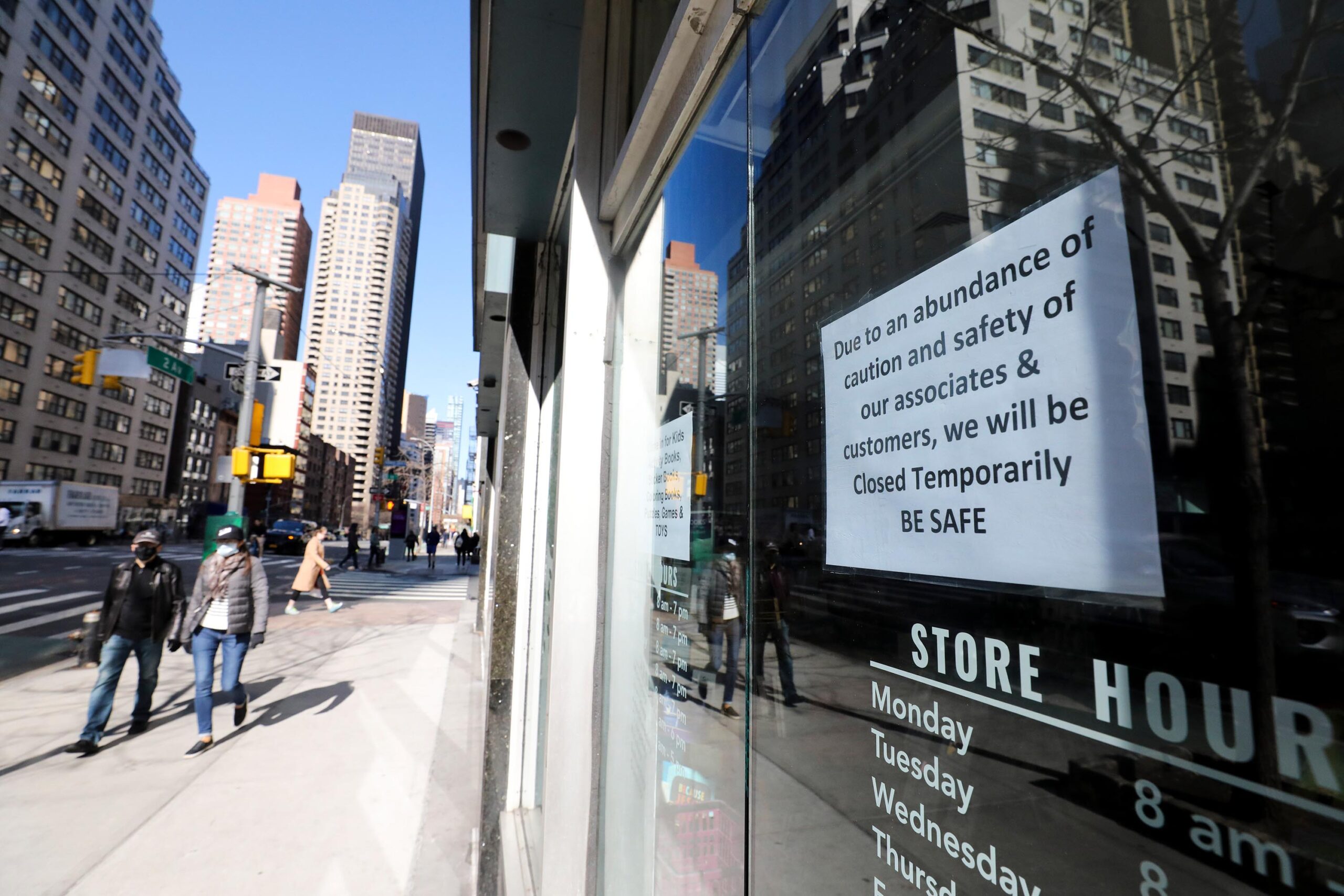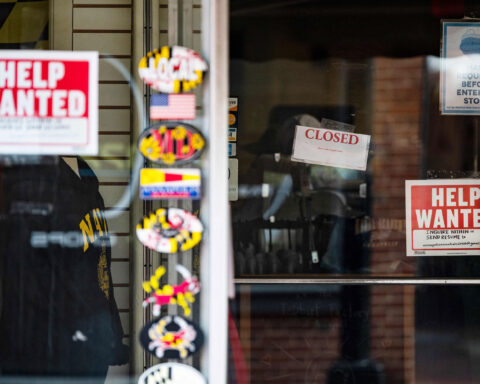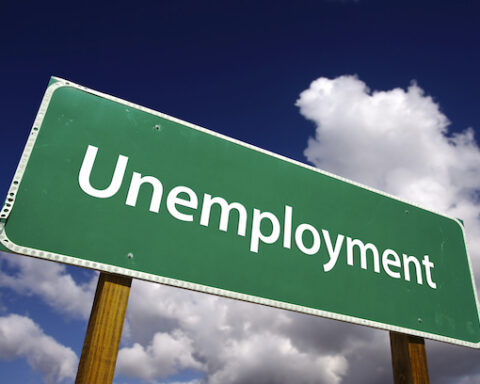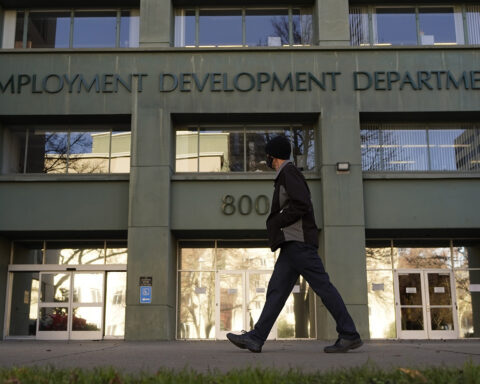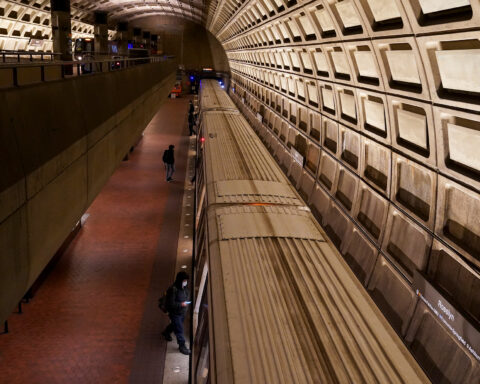Unhappy anniversary, jobless Americans.
This week marks a year since the coronavirus pandemic began upending the US economy, costing millions of people their jobs and forcing them onto unemployment benefits.
Those who are still out of work could soon start getting notices from their state unemployment agencies advising them that they are approaching their benefit year end date — which happens 52 weeks after an initial claim is filed.
Typically, the end of the benefit year means the jobless would have to establish a new claim to determine eligibility for benefits and to recalculate their payment amount based on more recent earnings.
But as with all things in the pandemic, it’s more complicated now.
Some out-of-work Americans may have to reapply, which could cause a temporary break in benefits and, possibly, a slightly smaller payment afterward — though the December relief package provided some protections for the long-term unemployed. But others won’t have to do anything and will continuing getting the same amount as before.
Much depends on which state claimants live in, whether they worked at all over the past year and which unemployment program they are on.
Multiple unemployment programs exist
Congress created two new unemployment benefits programs in its historic expansion of the nation’s jobless system last March. Lawmakers opened up eligibility to those who didn’t qualify in the past, such as the self-employed, and greatly extended the number of weeks people can receive payments.
The Pandemic Unemployment Assistance program allows freelancers, gig workers, independent contractors, the self-employed and certain people affected by the pandemic to get benefits. The Pandemic Emergency Unemployment Compensation program extends the duration of benefits for those in their regular state unemployment program.
The jobless in both these programs can receive payments through September 6 under the $1.9 trillion relief package President Joe Biden signed last week.
Also, thanks to a provision in December’s $900 billion relief package, those in the Pandemic Emergency Unemployment Compensation program shouldn’t see a drop of more than $25 in their weekly payments if they have to reapply, said Andrew Stettner, senior fellow at The Century Foundation.
States are handling the end of the benefit year differently. Some are automatically renewing applications so the jobless don’t need to do anything, but others are notifying certain claimants that they need to reapply or their benefits could be halted.
New Jersey’s Department of Labor & Workforce Development, for instance, has reprogrammed its system to review benefit year end claims on a large scale. It is urging claimants not to open a new application.
Instead, those who earned a certain level of wages will have a new claim filed on their behalf, the agency says. And those who did not work or did not meet the earnings threshold will continue collecting benefits on their existing claim.
“Our goal is for this to be seamless for most claimants,” Labor Commissioner Robert Asaro-Angelo said earlier this month. “We have the programming in place to complete the historic volume of year-end claim reviews federal law requires.”
Other states have their own rules
However, New York is taking a different approach. Its Department of Labor is telling those receiving Pandemic Unemployment Assistance benefits not to reapply and to continue certifying weekly. Same goes for those in the regular state unemployment program who did not work or did not earn 10 times their weekly benefit rate since filing their initial claim.
But those who did earn more than that amount must file a new claim, the agency says. And their new payments may be somewhat lower.
If they continue to file using their expired claim, their benefits may be stopped. Once they reapply, it could take two to three weeks for the new claim to be processed and for benefits to restart.
The state is texting and emailing claimants as they approach their end of their benefit year. The message informs them whether they are on the pandemic or regular state program.
In Texas, the jobless who first filed a year ago should await instructions from the state unemployment agency, which advises against trying to call.
Those in the state program who have worked and earned above a certain threshold in the prior year will have to reapply, said James Bernsen, a spokesman for the Texas Workforce Commission. But if their recalculated weekly benefit cuts more than $25 from their assistance, they will continue receiving the payment from the old claim.
Meanwhile, out-of-work Californians will receive a notice through their online account or in the mail from the Employment Development Department that their claim is expiring and that they must reapply. Depending on their situation, the agency will either move them to a new state claim or connect them to the federal programs.
One more wrinkle: Those on their state extended benefits program will all have to reapply when they reach their benefit year end. And, they are not protected by the December relief provision so if they did not work as much recently, they will likely see a lower weekly payment.
The jobless should pay close attention to notices from their state unemployment agencies and reapply if requested, Stettner said. If they don’t, the state agency could demand a return of some of the payment if their weekly benefit is trimmed.
“People are panicking a little bit about this benefit year ending, but it’s important to understand that it doesn’t mean their benefits are ending,” he said. “It means they may have to reapply if they worked. You don’t want to get dinged for an overpayment.”

